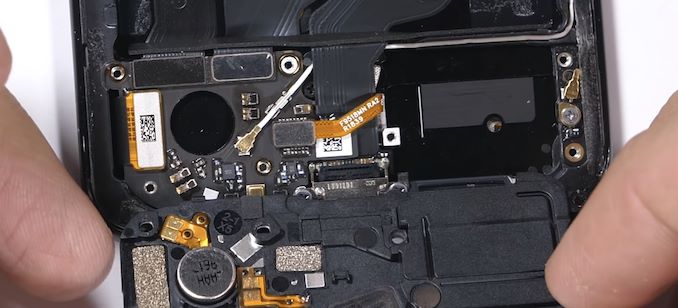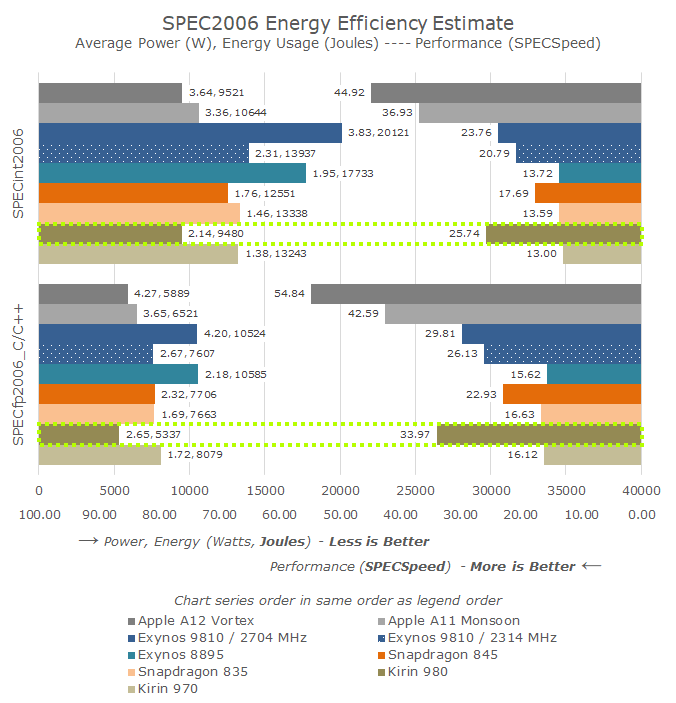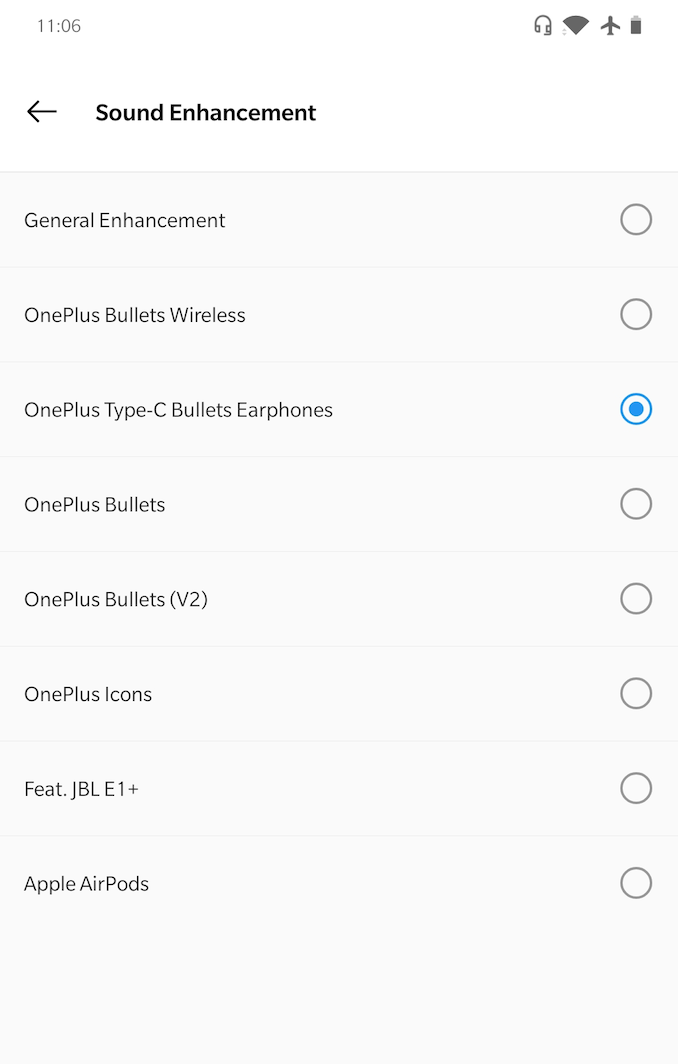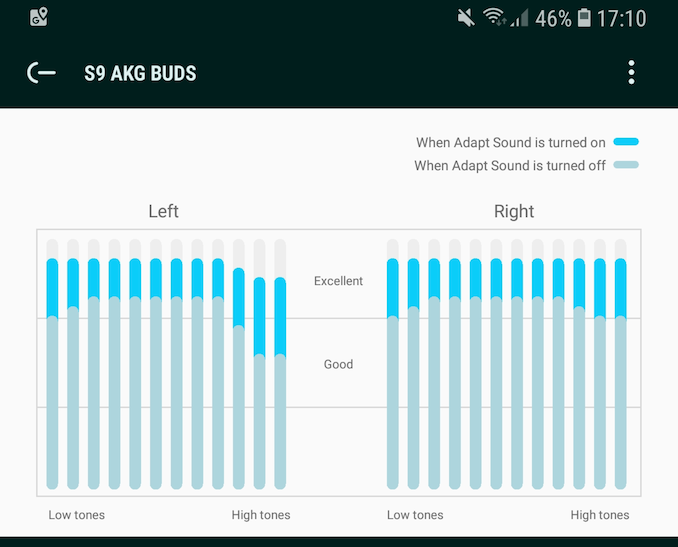AnandTech Year In Review 2018: Flagship Mobile
by Andrei Frumusanu on December 28, 2018 12:00 PM EST- Posted in
- Smartphones
- Apple
- Samsung
- LG
- Huawei
- Mobile
- SoCs
- OnePlus
- Year In Review
The SoC Is the Heart and Most Important Part of a Smartphone
While a few years ago, if you would have asked me what the most important part of a smartphone is, I would have said it’s the screen. In a sense, still many would agree with this today; however I find that smartphones these days have sufficiently good screens that there’s very little to improve on in terms of key characteristics and features. The AMOLED screen of a Galaxy S9 doesn’t offer all that better metrics than that of a Galaxy S6. Of course, there’s new stuff such as HDR, and the displays may have become brighter, but in the grand scheme of things these are just minor iterative improvements rather than defining experiences.
With many vendors now adopting OLED screens in their flagships, I find there’s much less of a differentiation on this aspect of a flagship smartphone. Of course, there’s still a few exceptions to this rule, such as LG notably struggling with the display power consumption of this year’s units, and of course a screen is only as good as it is calibrated.
So leaving the display as less of a major “critical” concern for most of 2018’s flagships, that leaves the SoC as the single most important component. The SoC defines what a smartphone is capable of – from the performance of the phone, to the media features to even how good the camera will perform given the SoC ISP is a key component in this regard. Most importantly alongside performance is of course power efficiency, and both are defined by the design and manufacturing of the silicon SoC.
It’s very much inarguable that 2018 was dominated by the Snapdragon 845: Qualcomm’s SoC powered essentially the vast majority of flagship smartphones, with only a few exceptions in the case of Huawei and naturally of course Apple’s iPhones. Here Qualcomm delivered one of its best SoCs to date, offering an excellent balance between performance and efficiency, all tied together with excellent software driving the hardware. This essentially guaranteed that almost any Snapdragon 845 phone will be an outstanding performer, all while delivering great battery life.
Silicon design is hard and also an expensive billion dollar venture – this is why most vendors rely on commodity components from Qualcomm. On the other side of the spectrum, we have Huawei and Apple as the only two fully vertically integrated vendors, who are also able to design their own silicon. It’s a risky business, however it can also pay off plenty when executed correctly.
An example of this paying off when executed well, is this year’s Kirin 980 as well as Apple’s A12. The new 7nm chips provided new levels of performance and efficiency, augmenting the products beyond that what can be offered by the competition. Both companies’ chipsets, as well as Qualcomm’s, have showcased fantastic improvements in terms of power efficiency.
Apple’s A12 this year especially was able to outshine the competition as we’ve now seen outstanding improvements in performance. This year’s performance jump in particular was significant for Apple – showcasing SPECint2006 speed base scores 15% higher than AMD’s Ryzen 2700X, while also not being very far away from Intel’s best desktop CPUs. We’ll be revisiting this performance comparison in the following months in more detail.
While we had some exemplary showcases on one side, on the other hand Samsung’s Exynos 9810 this year was quite a blunder. The chip initially had great promises, with the first “super-wide” core microarchitecture in an Android SoC. In practice however the SoC had massive issues both in terms of software, as well as just lacking the hardware power efficiency to be able to compete. This was felt no better than in Samsung’s own products: The Galaxy S9’s as well as the Note9’s differ in their SoC internals depending on the market. In practice, while the Snapdragon and Exynos variants very much look the same, they feel like very different devices as the latter has a significant performance and efficiency disadvantage.
2018’s Continued Headphone Jack Removal: Piling on the Stupid and Anti-Consumer Behaviour
2018 has continued to see a lot of companies remove the 3.5mm headphone jack from their smartphones. I’ve never really thought this was a good idea, as to me the reasonings that the companies gave just didn’t make any sense to me. Audio inherently is analog, and moving the internal audio DAC (which was fairly high quality) from being inside the phone to a lower quality DAC being just outside the phone on the connector is one of those things that still boggles my mind till today.
Much of the argumentation in favour of its removal was somehow increased internal space for other components. This seemed a far-fetched marketing argument that just didn’t hold up in practice, as essentially no vendor besides Apple (with the bigger taptic engine) has done anything of substance with the space.
 OnePlus 6 - Credit JerryRigEverything
OnePlus 6 - Credit JerryRigEverything

OnePlus 6T - Credit JerryRigEverything
The recent OnePlus 6T is the most abhorrent example of this as its headphone jack removal has done nothing to change the internal component dimensions on the bottom of the phone, and in place where the jack would be, we find… a slightly shifted vibration motor, and nothing else. This very much looks to be a calculated business move rather than a decision based on any kind of technical merits.
What really does boil my blood though isn’t just the argumentation that it saves on internal space, but that it somehow improves audio quality. Unfortunately this is again just a bad misconception that over the last year or two has now reached absurd levels. The one true technical benefit of having the DAC tightly coupled with a pair of headphones, is that you can tune the DAC to the precise frequency response of the drivers of those headphones, because well, it will never power anything else.
In particular this year’s two most prominent USB-C audio devices, Google’s Pixel USB-C earbuds as well as OnePlus’ Type-C Bullets fail at this exact promise: Google’s units in my experience just have abysmal audio, and you can do nothing about it as the phone offers absolutely no way to tune the audio output. If you plug the headphones in any other device, most of the time you’re also out of luck as most device’s audio equalisation options rely on hardware acceleration via the built-in DAC – but because USB-C audio is just digital pass-through, you’d have to resort to third-party software than pre-processes things on the CPU at increased battery drain.
Again as an example, OnePlus' marketing is very questionable in regard: On their webpage we see the quote:
“Better Audio with a Built-in DAC. We’ve crafted a listening experience that’s immersive, vibrant, and extraordinarily detailed, thanks to an advanced internal DAC with high-res audio support.”
Based on this you would expect the Type-C bullets to offer fantastic sound out-of-the box, yet there’s a hiccup: While the units do sound much better than Google’s, they’re still a far cry from optimal. In the OnePlus 6T’s audio settings we find a “Sound enhancement” option, and here we see OnePlus here provide equalisation presets for a set of popular headphones, among which is their new Type-C bullets. Enabling this option gives a much more optimal frequency response which does notably improve the audio experience.
Now the question here for me is: Why is this a software option on the phone rather something pre-baked into the Type-C Bullet’s DAC out of the factory? Do I also need to mention that in order to use the Type-C headphones on previous OnePlus devices you need to enable OTG in the settings (Which automatically turns off after 10 minutes), and even with this enabled, the OnePlus 6 currently doesn’t even actually offer the equalisation features of the 6T, as it’s only enabled for 3.5mm connected headphones.
3.5mm dongles have also been a complete disaster in the Android ecosystem: To date most smartphones relied on relatively high quality Qualcomm or Wolfson/Cirrus Logic DACs inside the phones, with Qualcomm in particular having made some fantastic strides in audio quality with their in-house ASoCs over recent years.
The same cannot be said of the commodity USB-C to 3.5mm dongles released to date; none of these are even remotely comparable with the performance of good internal DACs, and particularly Google’s bundled units are disastrous in terms of their analog output quality. Here I have to give credit to Apple: the company still seems to be the only one being able offer a 3.5mm dongle who has competitive analog audio output with little compromises. I would not be surprised if Apple’s recently released USB-C to 3.5mm dongle to be vastly superior in audio quality compared to anything offered by Android vendors.
To add insult on top of injury – companies are now starting to advertise the lack of a headphone jack as a premium feature. We addressed the OnePlus 6T, but also Huawei’s Mate 20 Pro not having a headphone jack, while its lesser sibling, the Mate 20 having one, is again some sort of nonsensical product segmentation which seems to be designed to simply generate more accessory sales. In this case you’re paying more for a phone to have a lesser feature.
Samsung, and partly LG, seem to be the only companies who are resisting this anti-consumer trend. Here Samsung in particular seems to have absolutely no issues in “managing its internal component space”, all while providing the best audio experience in the mobile space. It still surprises me that Samsung is still the only company to offers an actual audio calibration option via its Adapt Sound feature – a psychoacoustic feedback equalisation feature that will tune the audio output of its internal DAC to an experienced flat frequency response based on your particular headphones and your particular hearing. I vehemently urge Samsung to continue on their current path, as the competition can't seem to stop blindly shooting themselves in the foot.
Overall, 2018 has been a year of sheer stupidity when it comes to the topic of audio, 3.5mm headphone jacks, and USB-C audio. Companies will need to reconsider their strategies, and consumers who value actual good audio quality will need to vote with their wallets.













65 Comments
View All Comments
Gunbuster - Wednesday, January 2, 2019 - link
If you would not buy a $250 dollar steak for dinner you should not buy a $1000 phone. Only a small fraction of people should be in the market for a flagship phone...nikon133 - Thursday, January 3, 2019 - link
Eh, I have that cursed LG G7 ThinQ. I am not going to argue author's conclusion. All the points are valid.
In real life, though, not all the points are equally important - and it just happened that G7 compromises work great for me. I'm sure there are others out there that will agree.
I am not heavy phone user. When at home or at work, I will always rather browse, email, YouTube, Facebook... on desktop, laptop or Surface. Phone is my default go-to device only when out and about, so I have gotten to appreciate screen as is - 1000 nits on auto do look brighter in sunlight than my friend's new Mate 20 Pro with its 600-something nits.
Cameras do leave something to be desired. Photography is my hobby so I use dedicated cameras, at least RX100 if not SLR, whenever I can. It still happens that I come upon something worth making a photo without having camera on me, and phone has to do it - so I would honestly like to see improvements being made in Pie update, but - again, for me - these situations are rare and thus tolerable. Eventually, I can shoot RAW and process the hell out of it if I really want to get more details and control over the photos – I am not finding RAW quality of such small sensors worth it, but at least there is option to help when I am let down with in-phone JPGs.
On the other hand, phone is my main music player, and I do appreciate included DAC. I'm usually using it with wired Momentum 2 headsets and it sound really nice. Support for up to 2TB microSD card is also reassuring for anyone who uses phone for media – not that I am anywhere close to this requirement at the moment, in fact 128GB SD covers my current needs… but it is good to have space to grow.
Price was a factor - since I really don't use phone that much - I was looking for good deal, and G7 with Momentum 2 headphones and wireless charger for NZ$1,100 was really good buy. For comparison, 64GB iPhone XR is NZ$1400. Cut the extras which I wanted to get anyway, and my LG cost me NZ$500 – 600. It is great phone for that price range.
Larger battery wouldn’t hurt, but eventually, my worst case usage scenario has left me with around 40% of charge when going to bed. I am usually well over 50% at the end of the day, so battery size and indoor screen consumption aren’t hurting me… at the moment.
And, of course, under all that it is good performing phone with 845 chipset. Has really been reliable so far… I do restart it every 2 weeks, and run cleanup once a month… and didn’t have any unexpected battery drains, freezing, sluggishness… so far.
Overall, quite happy.
ErikTheRed - Friday, January 4, 2019 - link
I heard it alleged that what pushed Apple over the brink with the 3.5mm jack was a large spike in jack-related warranty claims after pushing into China (sorry, can't find the link). I don't have any inside info on that, but at least it makes more sense than the space-saving and waterproofing issues which sound more like excuses rather than reasons.With regards to the differences in sound quality with good Bluetooth headphones / earbuds vs. a smartphone's analog jack... I have three or four sets of Bluetooth earbuds and probably half a dozen or so over-ear headphones, and while earbuds can be a mixed bag I think you'd have to be very high to not find the newer Bluetooth headphones in general a much, much better audio experience - in some cases (like V-Moda's awkwardly-named "Crossfade 2 Wireless Codex Edition") it starts to approach what I get with a standalone and not-at-all-portable headphone amp. I suspect that this has less to do with the DACs involved than it does the amplification circuitry (there are limits to what can be accomplished without larger capacitors), the battery power available to drive the speakers, and the ability to tune the audio circuitry for specific speakers / drivers rather than trying to work well with everything. Beyond that, switching to cordless earbuds / headphones is like switching to a cordless mouse. You could go back, but... why? I can see it as a cost thing, but other than that modern Bluetooth has more than sufficient bandwidth and low enough latency to support audio quality well beyond what human ears can distinguish. Cords are tangly and tend to be the first thing to break. I'm sure there are plenty of people that love their cords for great reasons, but I would also suspect that the overwhelming majority given a side-by-side comparison would go cordless in a heartbeat.
nikon133 - Wednesday, January 9, 2019 - link
Wireless is good when I am active... but sometimes, I just want to sit in my favorite chair, read book and listen to music. Wired headset - even if there is no noticeable audio quality advantage - do have benefit of not having to be recharged. Ever.I already have 4 wireless headsets - 2 for gaming (PC and PS4), PowerBeats for exercising, and Urbanite XL for... actually not using them much, if at all, at the present. And I still reach for Momentum for music listening at home.
But then again, I'm also using wired gaming mouse and mechanical keyboard, too. I don't mind wires if they are not really in a way (as in exercising with wired headphones). Plus, there are already so many batteries to charge... beside those 4x headsets, 2 phones, tablet, laptop, 2 cameras, 3 rechargeable flashlights, ebook reader, 2 BT speakers... remotes... small kitchen appliances... BT handsfree for company car... probably missing quite a few... a bit overwhelming. If I can use something simple that doesn't require to be re-fueled and still provide quality results, why not.
And then, overseas flights. I live in NZ but have many relatives and friends in Europe and US. many flights over 10h, some over 20h. Wired headset, I can use simple adapter to plug them to airplane seat... hate those cheap and often broken plane headsets!... and I can use them all the in-flight time without running out of juice.
Impulses - Tuesday, January 15, 2019 - link
I'm against taking the 3.5mm jack away on principle, it's definitely anti consumer and pitching it as a high end benefit is beyond silly, there's just no major upside to taking the option away. On paper however it's just not a deal breaker for me, at all.The original Google USB-C dongle (not v2 with it's silly high output impedance) and the Apple one both measure and sound better than the jack on my OG Pixel ever did (~3ohm output impedance there probably interacts poorly with my IEM).
I rarely even use the dongles tho, I've been using clip on Bluetooth receivers for years with my wired headphones as it gets rid of the most annoying wire (the one tethering me to my phone) but doesn't tie me to Bluetooth headphones with a built in shelf life.
The newest units with LDAC and innovative DAC implementations (EarStudio ES100 is my current fave) probably sound better than a lot of phones do tbh, despite the lossy compression. OPPO PM-3, V-Moda XS, Etymotic hf5, and Massdrop Plus are my points of reference for mobile headphones/IEM FWIW.
Has Anandtech ever thought about reviewing Bluetooth receivers like these? (Radsone ES100, Fiio micro BTR & BTR3, BlueWave Get, Sony and AT's attempts, etc.) It's pretty hard to come by reliable reviews of what's an underrated product category IMO.